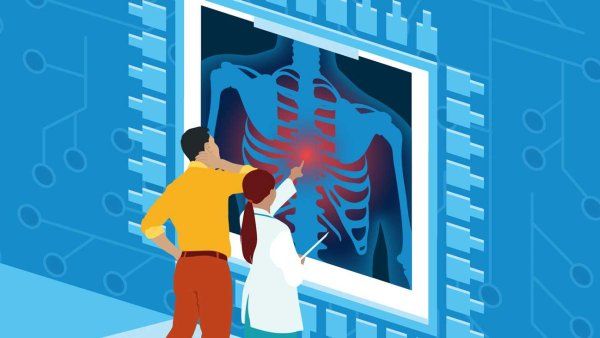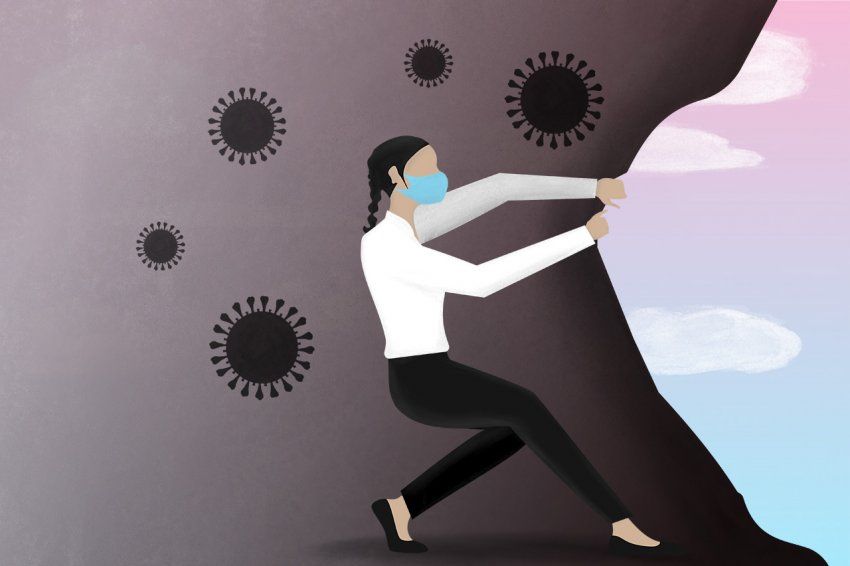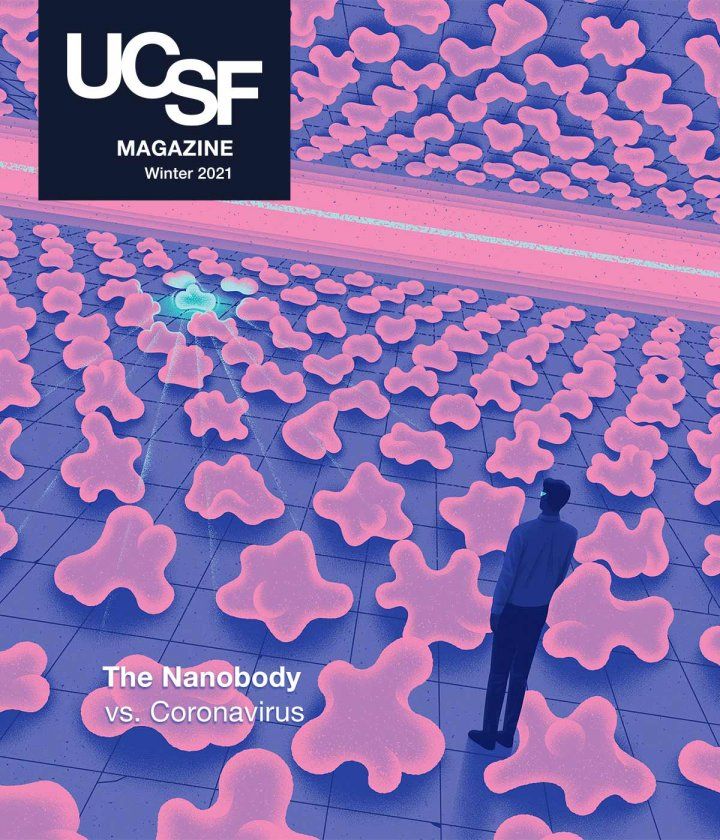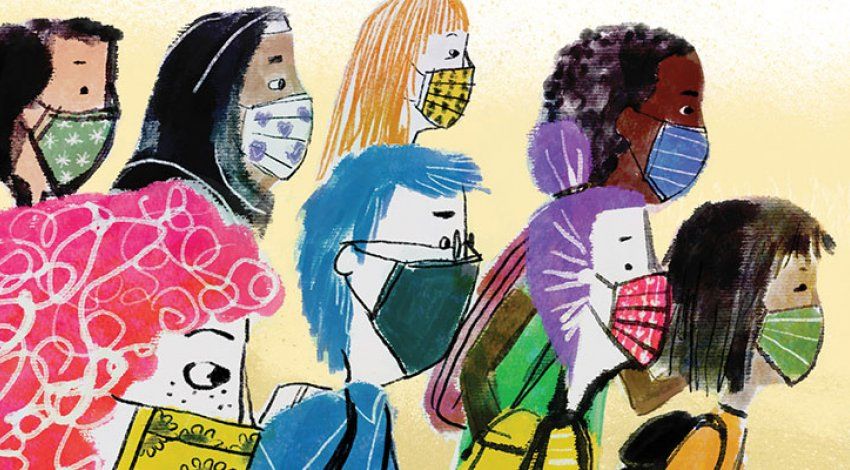
COVID-19 Predictions for 2021 and Beyond
Few would have predicted last January that a pandemic would upend our daily lives. But one grueling year in, UCSF experts have a clearer view of the path ahead.

Illustration: Maria Stavreva
Published January 19, 2021
What is an effective rate of immunity that will allow workplaces and businesses to reopen, and when will we reach that?
For herd immunity, I believe 70% vaccinated is likely the magic number. Given potentially more infectious variants, some pundits have raised that to 80%, but it depends on how the new variants take off. Even before we reach herd immunity, transmission will slow down as more people get the vaccine, so we will start a gradual return to normal in the spring.
But to reach pre-COVID “normal” with herd immunity on a national level may take until the fall. Global herd immunity may take until summer 2022. Everyone’s focused on vaccine availability right now – how many million doses can we get by February – but vaccine acceptability is the part that makes me nervous. People continue to be a little guarded about the vaccine because of news about allergic reactions, politics, and hesitancy among communities of color that runs deep.
If my fears about acceptability are unfounded, we can have a good Thanksgiving and Christmas in 2021.
If we don’t reach 70%, we’ll be stuck in limbo. There will be some reopening and continued mask-wearing. There may be a future where certain activities will be open only to people who’ve gotten the vaccine.
Peter Chin-Hong, MD
Professor of medicine
Do you expect a fourth wave of infections before we can get enough people vaccinated to achieve herd immunity?
While we all desperately hope to avoid a fourth wave, it’s unlikely that a sufficiently large proportion of the population will be vaccinated to prevent one in the spring.
Earlier, in the Bay Area, we saw that there were periods of about five to six weeks between the first and second surge and the second and third surge. If this current third wave does indeed peak in mid-January and starts to decline due to shelter-in-place interventions, expanding vaccination, and naturally acquired immunity, experience tells us that we’re likely to see an increase again by later March. In particular, the gains we’ve made could potentially be offset by schools reopening, students returning to college residences, and businesses reopening.
Unfortunately, that means that we’ll likely be relying on our current mitigation methods well into the late spring or early summer. So keep your masks on, continue physical distancing, and keep gatherings confined to members of your household.
George Rutherford, MD
Professor of epidemiology and biostatistics, Lucia Professor of Preventive Medicine
What treatments do you see on the horizon that may be used alongside the vaccine?
We’ve made remarkable progress in sorting out agents with demonstrated efficacy from the many that have been promising but have not panned out. We have remdesivir, an antiviral that has been shown to shorten the time to recovery; and dexamethasone, which reduces mortality, particularly in the sickest patients. And we may find that antivirals like remdesivir are more effective in combination with an anti-inflammatory, with interferon, or in a “cocktail” of antivirals with different targets, similar to the approach used against HIV.
Right now, we’re limited to a few treatments that can help patients in the hospital, and those treatments don’t always prevent patients from dying or becoming severely ill, especially if they’re started late. We need therapeutics people can take at home that will keep them from getting really sick, transmitting to others, or going to the hospital in the first place. A number of oral, injectable, and inhaled agents are being evaluated for outpatient use, perhaps even as preventives.
I’m optimistic that in 2021 we’ll have effective COVID-19 treatments that people can take at home, as well as improved therapeutics for hospitalized patients.
Annie Luetkemeyer, MD
Professor of medicine
Will SARS-CoV-2 mutate further to make a vaccine ineffective next year?
Although the virus will continue to mutate, it’s unlikely that it will mutate such that the vaccines are not effective.
Unlike flu viruses, SARS-CoV-2 actually mutates very slowly, thanks to an error-correcting protein that fixes mistakes in replication. Flu virus genomes have segments that can swap to create new flu strains, whereas the SARS-CoV-2 genome is a single segment.
Also, a nice thing about the [Pfizer and Moderna] mRNA vaccines is that they produce the entire viral spike protein, so a person who is vaccinated will generate a variety of antibodies that target different locations on the spike. That means even multiple mutations to the spike protein, as in the case of the UK variant, would likely not be sufficient to render the vaccines ineffective. However, it is possible that with even more spike mutations, as seen in the South African variant, the vaccines may be slightly less effective.
What’s important is how soon we can control the pandemic. If we do not achieve herd immunity by end of 2021, say, then the virus will continue to acquire mutations, and I’d start to worry about having to update our vaccines on a regular basis, as we do for the flu.
Charles Chiu, MD, PhD
Professor of laboratory medicine; director, UCSF-Abbott Viral Diagnostics and Discovery Center
What do we know about the long-term health effects of COVID-19?
We have more questions than answers when it comes to “long COVID.” We don’t even know how common it is [among patients]; estimates range from 10% to more than 80%. What’s becoming clear is that the impact of COVID-19 isn’t as simple as living or dying from the virus.
The most common things we see are persistent fatigue, shortness of breath, and chest pain. But we also see more severe symptoms, like damage to the heart and an increase in blood clots that can cause strokes or lodge in the lungs.
There’s a lot of research underway to understand why some people have these lingering symptoms. Here in our clinic, we’re following COVID-19 patients to see how they are one month out and three, six, and nine months out. A year from now, we will know more.
It’s also important to evaluate patients with lingering symptoms with an open mind. We don’t want to dismiss a non-COVID-related condition that might be causing the symptoms.
But with this new surge, we’re certain to see huge numbers of people struggling with COVID-related symptoms long after their infection, and I worry that this will mean a lot of people with long-term disability.
Lekshmi Santhosh, MD
Assistant professor of pulmonary/critical care medicine; founder, OPTIMAL Clinic (for post-COVID care)




